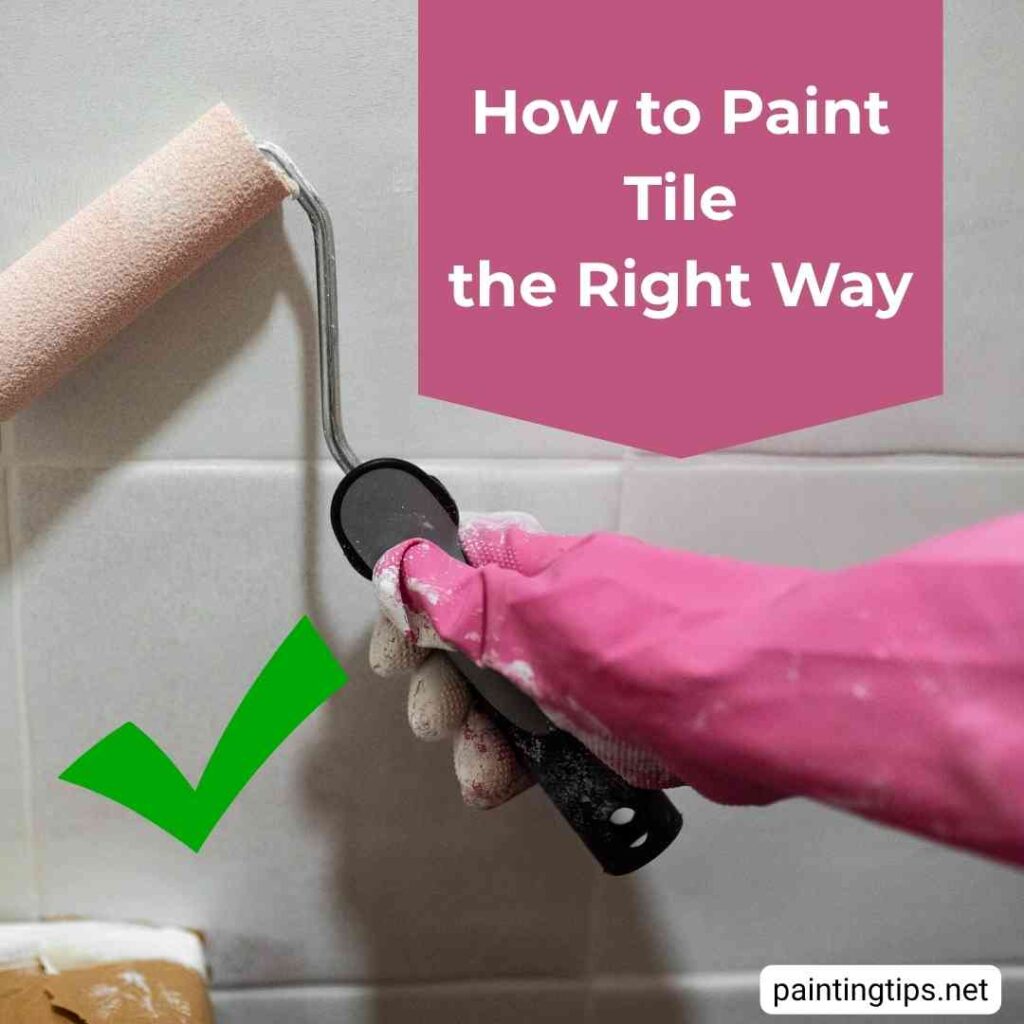Refreshing your kitchen or bathroom doesn’t always mean tearing out old tiles and starting from scratch. Tile painting offers a quick, cost-effective way to transform your space without the mess or expense of a full renovation. From updating outdated colors to coordinating with new furniture, painting tiles can breathe new life into your rooms. In this guide, we’ll cover everything you need to know—from choosing the right paint to step-by-step application and sealing—to help you achieve a professional-looking finish that lasts.
Tile Painting

When you decide to refresh your kitchen or bathroom, you don’t have to get lost in a sea of confusing tile designs. There’s an easier way: tile painting. Painting tiles is one of the simplest and most budget-friendly ways to give your kitchen or bathroom a makeover without dealing with a messy renovation. By painting your tiles, you can bring your favorite color into your space or make your existing tiles match better with your new furniture.
Nowadays, many homeowners prefer the idea of painting tiles instead of replacing them, as it’s far less complicated. If you’re tired of your tile color, you can paint them too! While painting tiles is easier than installing new ones, it requires more attention and precision than ordinary painting projects. As you might guess, getting paint to stick to the tile’s slick surface can be tricky—but with the right preparation, this challenge can easily be overcome and even turn into a fun DIY project.
Is Painting Over Tiles a Good Idea?
Painting tiles is a more budget-friendly project than replacing them. But is painting over tiles always a good idea? When you decide to paint your tiles, there are a few challenges you should be aware of.
The first issue is that paint doesn’t adhere well to glossy tile surfaces. You can solve this problem by using a high-quality bonding primer designed for slick surfaces.
The second challenge is that floor tiles are more prone to wear and tear. Floors always have a higher risk of abrasion. If you plan to paint your floor tiles, you’ll need an extra layer of protection after painting. A water-based varnish can help, but an epoxy sealer is an even better option for long-lasting durability.
The third issue is high humidity. If you plan to paint bathroom tiles, remember that the paint will be exposed to heat and moisture. To prevent peeling or bubbling, make sure your bathroom is well-ventilated and that steam is quickly removed after showers. Ultimately, success depends on your painting experience and the quality of the primer and paint you use.
What Kind of Paint Do You Use on Tiles?
When painting tiles, it’s better to use a brush rather than spray paint. This allows the paint to be applied thicker and creates a more durable finish. It also gives you greater control over the painting process and coverage.
The best paints for tiles are specially formulated tile paints. After that, epoxy paints and multi-purpose acrylic paints are also excellent choices for tile surfaces. Here are some recommended options:
- Sherwin‑Williams: Extreme Bond Primer, Emerald Interior Acrylic Latex
- Benjamin Moore: INSL‑X STIX Waterborne Bonding Primer, Aura Bath & Spa, Ben® Interior Acrylic Paint & Primer
- Rust‑Oleum: Tub & Tile Refinishing Kit, Tub & Tile Aerosol Spray
What Is the Downside of Painting Tile?
Before diving into tile painting, it’s important to consider some potential issues. This way, you can better decide whether painting your tiles is the right choice and handle the process more smoothly.
First, clarify your expectations. Painting tiles may not be a long-term replacement for new tiles. However, with the right paint and good workmanship, tile paint can last for years on your surface.
After painting, grout lines may still be visible. Usually, they appear as small indentations and don’t negatively affect the overall look. In fact, paint often adheres better to the grout than to the tile itself.
Be extra careful when painting floor tiles. Floor tiles in high-traffic areas are more prone to chipping, scratching, and peeling. Even with epoxy or specialized tile paints, heavy wear can eventually damage the surface. As a precaution, you can check the floor every two years and reapply an epoxy coating if needed.
How to Paint Tile

Before you start painting tiles, remove any items or accessories that could slow down or complicate the process. For wall tiles, temporarily take down soap holders, shampoo racks, hooks, and grab bars mounted on the tiles.
1-Fill Gaps Between Tiles and Grout
Repair any holes or cracks on the tile surface and in the grout lines using grout filler. Make sure these repairs are fully dry before applying primer.
2-Clean the Tile Surface with Vinegar Water
Tiles are often glossy and slippery, which makes it hard for paint to adhere. Paint also doesn’t stick well to dirty or damp tiles. Before painting, wipe the tiles with a mixture of vinegar and water, and allow them to dry for a few minutes. “Related article: How to clean grout between tiles.”
3-Prepare the Tile Surface
Tiles are not naturally ideal for paint adhesion. To ensure the paint sticks properly, you either need to lightly sand the surface or apply a primer. Generally, priming is the easier and more common method. This is one of the most important steps in tile painting.
You can use the primers included in tile painting kits, or a general-purpose bonding primer. These primers help the paint adhere to the tile and can also help cover dark-colored tiles. Usually, one coat of primer is enough, but if you have extra primer, you can apply a second coat after the first one dries completely.
4-Painting the Tiles
After priming, let the primer dry completely—typically about 5 hours. Then, using a high-quality short-nap roller, apply at least two coats of paint, waiting about 5 hours between coats. Always follow the drying times and application instructions on your paint label.
5-Sealing the Painted Tiles
One of the most important steps in tile painting is sealing the paint. This is especially critical when painting floor tiles. If your tile painting kit doesn’t include a sealer, you can protect the painted surface with an epoxy sealer after the paint has dried. “You might also like: Can You wallpaper over tiles?”